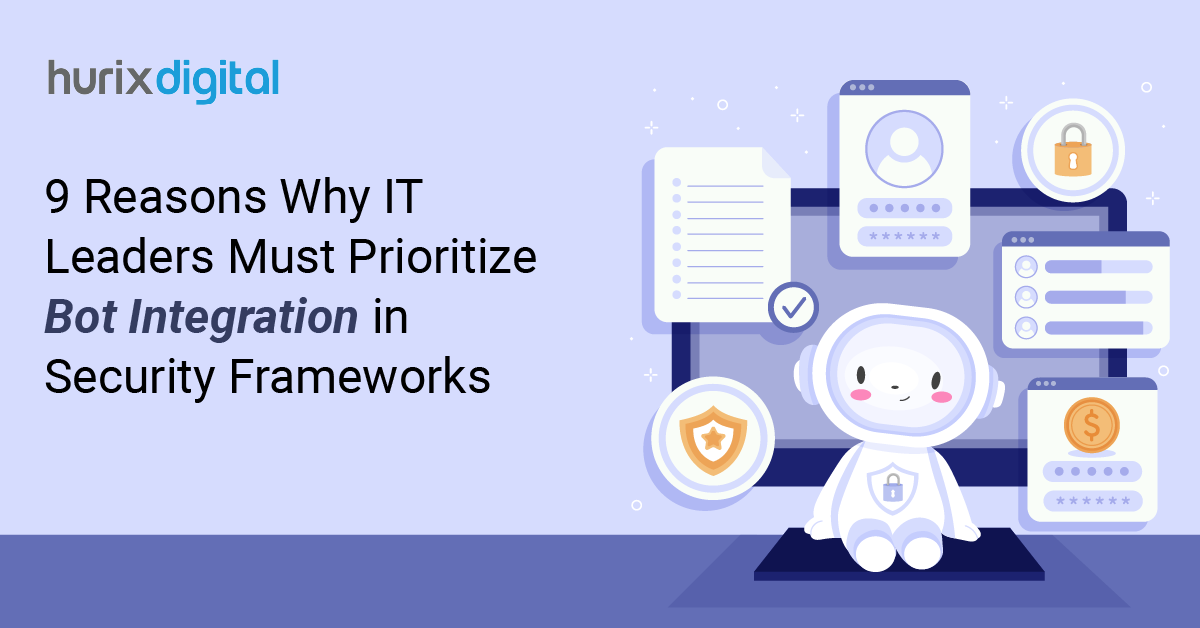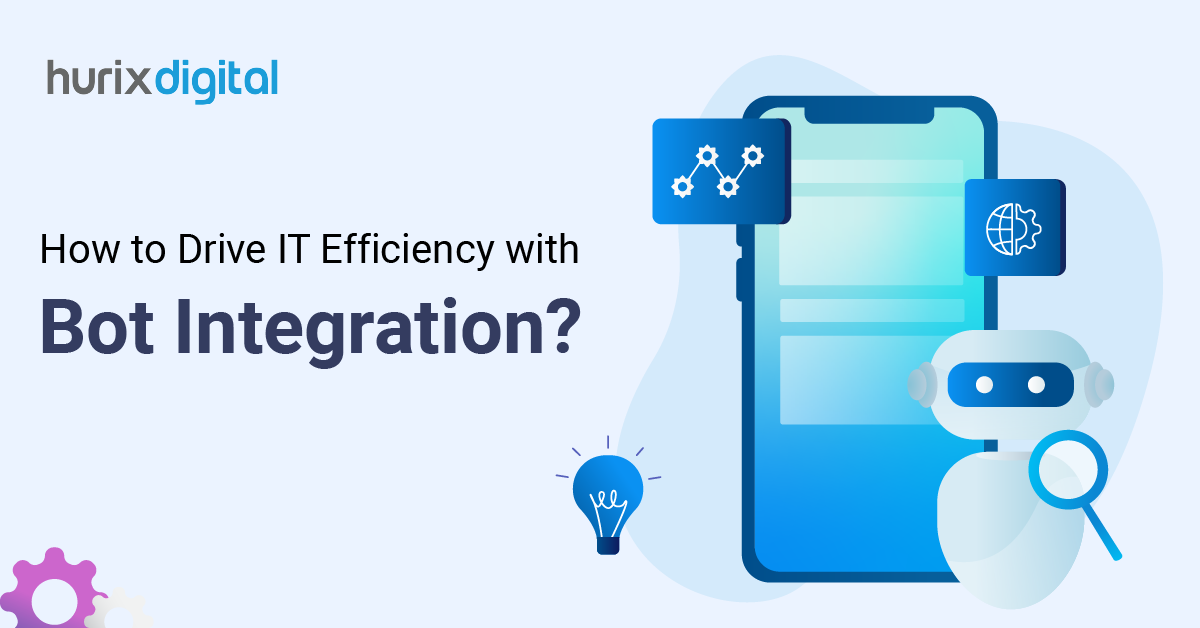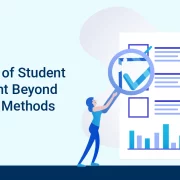
9 Reasons Why IT Leaders Must Prioritize Bot Integration in Security Frameworks
Summary
Chatbots are an indispensable technological advancement that helps business leaders automate tasks, enhance user interactions, personalize services, and ease the burden of human interactions. They are in high demand because of their 24/7 accessibility and provision of on-demand consumer experiences. These advancements are known to enhance interactions between customers and businesses.
The rampant use of chatbots within organizations challenges the traditional ways consumers interact with businesses. This transformation showcases how efficiency and user experience are redefined. Today, 70% of white-collar employees use chatbots to complete daily tasks efficiently, and about 80% of companies use chatbots for customer engagement, marketing, and operational efficiency.
The global chatbot market is expected to cross $15.58 billion by 2028, with an estimated CAGR of 23.3% from 2023 to 2030. Despite the worldwide dependence of organizations on chatbots, IT leaders are worried about the risks posed by sophisticated bots. Let us delve into the relevance and best practices for secure bot integration.
Table of Contents:
- Secure Bot Solutions for Businesses
- Best Practices for Secure Chatbot Integration
- Implement Chatbot Encryption
- Use a Role-Based Access Control System
- Conduct Security Audits
- Standardized Chatbot Testing
- Secure Chatbot Integration with Existing Security Infrastructure
- Secure Chatbot Integration and Effective Functionality
- Training and Education
- Smartly Give Human Options
- Measure Chatbot Effectiveness
- IT Security and Chatbots for Businesses and Customers
- Conclusion
Secure Bot Solutions for Businesses
A report on ‘2021 Bot Management Trends‘ emphasized issues like site slowdowns, account fraud, credential cracking and brute force attacks, account takeovers, etc., which has made security leaders skeptical towards using advanced bot services.
Every piece of technology comes with cyber-attack hazards. IT leaders must not ignore chatbots’ substantial contribution to businesses. Instead, they should establish a standardized and thorough testing strategy for mitigating bot security risks. End-to-end testing ensures that the chatbot performs as intended across all stages of interaction.
According to Gartner, by 2027, chatbots are expected to become the primary customer service channel for about a quarter of organizations. A survey conducted in early 2022 revealed that 54% of organizations were already using some form of chatbot for customer-facing applications.
For IT leaders, the critical question becomes: “How to ensure effective and secure chatbot integration?” Thankfully, AI advancements offer solutions that can integrate a company’s messaging infrastructure with various systems through chatbots and emerging IoT messaging standards.
Using natural language processing and artificial intelligence, this development can meet customer needs and be securely integrated into enterprise messaging systems to drive internal efficiencies.
Let us find out how to ensure top Bot security for IT leaders and the significance of Bot integration!
Also Read: How Cloud-Managed Services Enhance Cybersecurity for Your Business?
Best Practices for Secure Chatbot Integration
The need for robust security measures, especially for integrating chatbots, cannot be overstated. Chatbots handle sensitive data. IT leaders must conduct a comprehensive security and requirements assessment before integrating secure bot solutions for businesses.
During bot integration, IT leaders must ensure that:
- The AI tools are equipped to handle unpredictable data inputs effectively.
- Secure chatbot integration should revolve around localization, performance, and security aspects beyond basic functionality.
- IT leaders must effectively incorporate the use of voice or text-based interfaces based on the audience.
- The objective should be to offer a user experience that is compatible across different digital channels and platforms.
- Chatbots should be effectively programmed to deliver the right message at the right time.
Here are some best practices:
1. Implement Chatbot Encryption
The first step is to ensure that the chatbot’s architecture is designed with security at its core. It should follow end-to-end encryption of messages and implement a role-based security framework.
Encryption should be robust enough to protect sensitive consumer and business information, which cannot be intercepted by malicious actors. Ensure that APIs used to integrate chatbots with other systems are secure. This includes using authentication tokens and API gateways and limiting API access to necessary systems and users only.
2. Use a Role-Based Access Control System
Role-based access control can restrict interaction with the chatbot’s backend systems and sensitive data. Only authorized personnel can handle chatbot-related features and data, which can mitigate the risk of internal threats. IT leaders must implement multi-factor authentication and authorization protocols to verify the credentials of people accessing the chatbot system.
3. Conduct Security Audits
IT leaders must ensure that regular security audits are organized to identify and address potential vulnerabilities in the chatbot’s infrastructure. This includes:
- Review the chatbot’s code
- Check third-party integrations
- Verify communication protocols
4. Standardized Chatbot Testing
Chatbot testing must check for randomness and uncertainty in conversations. Chatbots interact with various cloud services and platforms, which can make it quite complex to predict every user input. Here are some ways in which IT leaders can ensure secure bot solutions for businesses:
- Initiate manual testing, followed by beta testing with a closed group to gather real-time feedback.
- Refine the chatbot’s data model and improve its responses.
- Use automation for functional testing and test the conversational flow to ensure user engagement.
- Penetration and vulnerability testing to simulate attacks and assess the chatbot’s security posture.
5. Secure Chatbot Integration with Existing Security Infrastructure
Organization leaders must ensure that the chatbot is integrated with the organization’s existing security infrastructure, such as firewalls, intrusion detection systems, and security information and event management systems. Equally significant is ensuring that chatbot security measures complement industry standards and regulatory compliance requirements.
6. Secure Chatbot Integration and Effective Functionality
Successful chatbot programming must anticipate and manage a wide range of scenarios. Chatbots should be capable of addressing unfamiliar or difficult-to-predict scenarios. Developers need to design chatbots that can handle incomplete or irrelevant information while ensuring that the conversation remains engaging and secure. Chatbot testing is necessary to ensure:
- The chatbot effectively introduces itself and explains its capabilities when a conversation starts
- It understands casual conversations and comprehends the user’s questions accurately.
- It offers valid and relevant answers to user queries.
7. Training and Education
It is imperative to train and educate employees about the security risks associated with chatbots and best practices for interacting with them. Training modules must include awareness of phishing attempts, social engineering attacks, and the significance of not sharing sensitive information.
8. Smartly Give Human Options
It is crucial to consider the target audience during the chatbot design phase to ensure that interactions are personalized to their needs. Despite the best efforts in programming, some scenarios will remain unpredictable. In such cases, the chatbot should be equipped to transition to a human representative.
9. Measure Chatbot Effectiveness
IT leaders must track key metrics like:
- User Engagement
- Speed to provide quick and accurate responses
- Functionality
- Interoperability and integration with other systems and platforms
- Scalability to support multiple users and additional modules
IT Security and Chatbots for Businesses and Customers
Chatbots offer a wide range of benefits for both businesses and customers. 72% of business leaders have prioritized AI and chatbots across customer experiences.
- Secure chatbots ensure customers receive prompt and efficient service at any time and lead to a 3% increase in customer satisfaction and a 17% improvement in first resolution time.
- AI chatbots integrated with systems like CRM or marketing tools can offer personalized recommendations and update customers on order statuses.
- Chatbots break down language barriers by offering multilingual support and empowering customers to resolve basic issues on their own.
- By monitoring user activity, chatbots can proactively reach out to customers to address potential issues or provide helpful information.
- Secure chatbots learn from customer interchanges and refine their ability to provide accurate and personalized responses.
- They can be programmed to request feedback after each interaction, handle repetitive tasks, and offer self-service options.
- AI-powered chatbots can detect customer intent and sentiment through natural language processing and automate sales tasks. This can empower businesses to serve more customers without increasing staff.
Also Read: The Role of Product Engineering Services in Evolving Technology
Conclusion
Mitigating Bot Security Risks involves a comprehensive approach that includes security assessments and thorough testing to ensure functionality. IT leaders must follow best practices to enhance overall business operations and natural-language interactions. Today, all industries are adopting AI-powered chatbots to automate tasks and enhance operational efficiency. Secure Chatbot Integration requires a human-centric approach to AI, which revolves around continuous training and testing.
Partner with Hurix Digital and enhance the value of secure chatbot integration with relevant training modules and materials. Integrate secure AI chatbot solutions into your customer service strategy and watch how technology transforms your CX.
Get in touch with us today!

Currently serving as the Vice President of Technology Delivery Operations at HurixDigital, a prominent global provider of digital content and technology solutions for publishers, corporations, and educational institutions. With over 16 years of experience spanning EdTech and various domains, I hold certification as a SCRUM Product Owner (CSPO). My expertise includes operations, finance, and adept people management skills.




